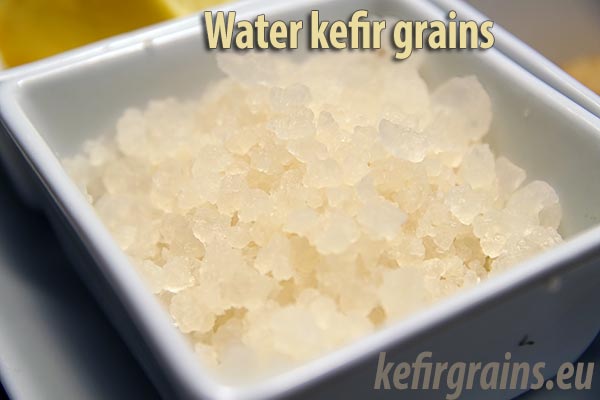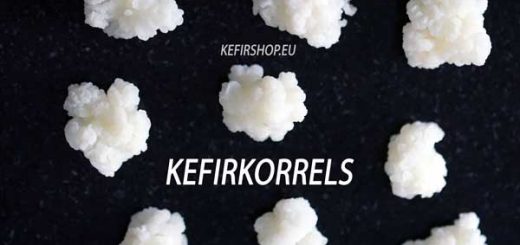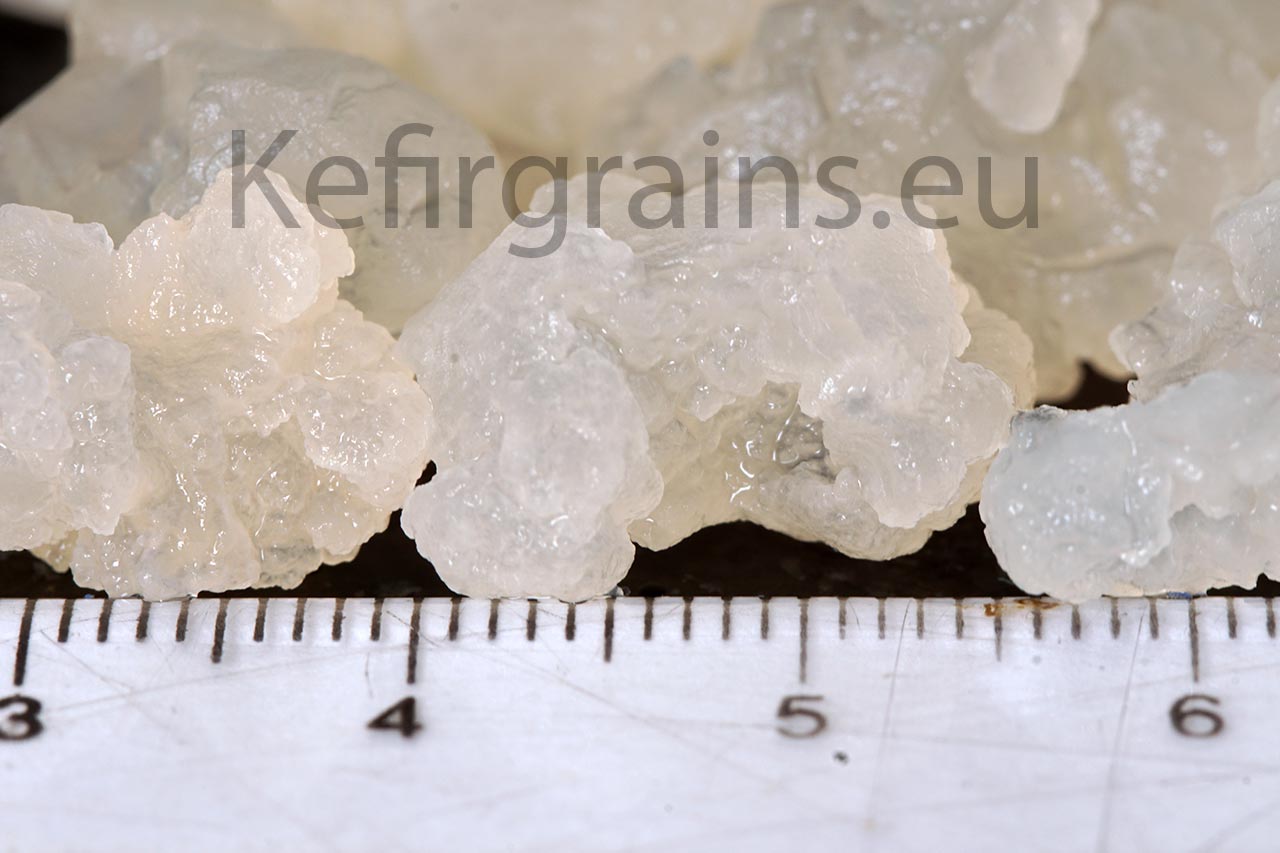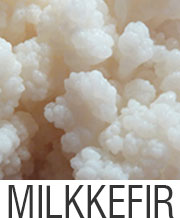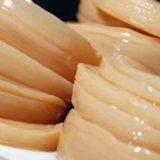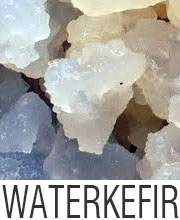Where to buy Kefir grains?
Where to get Kefir grains?
Kefir is a cultured milk product with a vast range of health benefits. This product is creamy, has a sour tart flavor, and is refreshing. It has plenty of beneficial yeasts and probiotic bacteria that contribute to kefir’s several health benefits. Kefir grains, gelatinous yellow or white particles, form the basis of kefir.
Kefir grains contain yeast or bacteria clumped together with complex sugars and milk proteins called caseins. The size of the kefir grain ranges from a wheat grain to the size of a hazelnut. The kefir grains properly ferment the milk to produce the cultured kefir.
People often get confused about where to buy kefir grains. This is because kefir grains are not frequently available in physical stores or online. There are very few trustworthy sources that sell Kefir grains on the internet. One of the reliable sources is Kefirshop.eu. They sell fresh and dehydrated kefir grains of excellent quality. The best thing about Kefirshop is that it ships its products internationally. The price of grains that Kefirshop.eu sells is also quite affordable.
Where can you buy fresh kefir grains?
 If you live in Europe, you can choose fresh kefir grains instead of dehydrated ones. You can use the kefir grains immediately after you get them in the mail, after a few days. They sell fresh kefir grains of excellent quality. One or two tablespoons of kefir grains would be more than enough for you to start making your kefir.
If you live in Europe, you can choose fresh kefir grains instead of dehydrated ones. You can use the kefir grains immediately after you get them in the mail, after a few days. They sell fresh kefir grains of excellent quality. One or two tablespoons of kefir grains would be more than enough for you to start making your kefir.
Live kefir grains are sold at Kefirshop.eu, are vacuum sealed with air and are well packed. Thus, when they arrive, you will be pleased to find the grains usable and intact. Many sellers do not seal the kefir grains properly; therefore, they are difficult to use due to insufficient packaging.
Where can you buy dehydrated kefir grains?
If you do not need the kefir grains for immediate use, you can go for dehydrated kefir grains instead of fresh grains. The Kefirshop provides the best-quality dried kefir grains. You need to rehydrate the dehydrated grains. However, there is nothing to worry about, as the seller will provide instructions.
What is a freeze-dried kefir starter?
Many choose a freeze-dried kefir starter instead of fresh or dehydrated kefir grains. The people who do not have the time to make new batches of kefir every few days choose a freeze-dried starter. They are available in powder form. Though they are not actual kefir grains, the freeze-dried starter is a convenient option for people who want to occasionally enjoy kefir made at home. This is the perfect solution for those who don’t want to maintain kefir grains. You can obtain the best freeze-dried starter from Kefirshop.eu.
Kefir Lady and Cultures of Health are other sources to buy kefir grains. However, the grains are expensive, and the packaging is not too good.
FAQ’s
What are kefir grains?
The “kefir grains” used to make Kefir are not grains but a polysaccharide matrix containing a symbiotic colony of bacteria and yeast (just like a Kombucha SCOBY). Unlike Kombucha SCOBYs, kefir grains are more sensitive to temperature changes and starvation if they run out of “food.” The Kefir grains used to manufacture Milk Kefir thrive on lactose (milk sugar). Sucrose (often known as table sugar) is used to ferment water kefir.
Where can I get authentic kefir grains?
Our Kefir grains are ideal for making your home-brewed Kefir; as with Kombucha SCOBYs, you must ensure they come from a reputable supplier. When purchasing Kefir grains online, please make sure to obtain them from a trusted supplier. Our Milk Kefir Grains are packaged fresh, completely hydrated, and dispatched immediately to provide the most potent Kefir Grains arrive at your door. While it may take a few batches for the grains to adapt to their new home and food supply, these fresh kefir grains will create great Kefir and reproduce faster than desiccated Kefir grains.
Where do I find Kefir grains to make my own?
KefirShop.eu makes it simple to order Kefir grains online so you can make Kefir at home. The Kefir grains you buy will be packaged safely and hygienically.
KefirShop.eu makes it quick and straightforward to order Kefir grains online so you can make your own Kefir at home. Get your Kefir grains from our convenient online store! Prepayment is accepted via credit card, PayPal, iDeal, bank transfer, and express/priority bank transfer for international orders shipping to Belgium. Shipments of a single Kefir culture cost 7.99€, while those of multiple cultures cost 12.99€ to deliver (including glasses, accessories, etc.). We accept payment methods in addition to cash on delivery for orders placed within Benelux. Within Benelux, there is a flat shipping rate of 7.99€.
Do the Kefir grains suffer any damage during shipping?
We have been supplying organic Kefir for over 15 years and are the country’s longest-running supplier. Our kefir cultures will be carefully packaged and sent out on the day of shipment. This extra work ensures that your culture will remain sealed for no longer than is necessary. We use fresh milk to transport our kefir grains during shipping. This way, the Kefir grains can survive shipping for several days without damage. However, you should still open and cultivate them again immediately upon delivery, as detailed on our Kefir preparation page.
When making Kefir, what can I do to make it even creamier?
Milk kefir typically does not thicken to the consistency of yogurt or curd. It has a thick, creamy texture, like buttermilk or a yogurt beverage. As a result, most commercially available Kefir products have an extra layer of thickness added to them before they hit the shelves. However, there is a straightforward method to thicken Kefir at home quickly: stir your batch well after one day of fermentation and then leave it untouched for another day (with the kefir grains in it). When you stir, you can add milk that hasn’t had much time to ferment to the kefir grains. After 48 hours of fermentation, the grains will be more efficient, and your kefir will become particularly dense. After 48 hours, almost no lactose is left, but in exchange, there are many more extra lactic acid bacteria and yeasts, enhancing the healthfulness of your Kefir.
You can quickly thicken the milk kefir if they prefer a creamier and firmer consistency. All naturally occurring cold-binding agents are acceptable here. It improves Kefir’s texture and flavor by making it thick and creamy. Linoleic acid, a polyunsaturated fatty acid found in lecithin, has been shown to aid in maintaining a healthy level of blood cholesterol. In addition, lecithin is an essential natural source of choline, which helps your liver metabolism function properly.
How can I get bigger Kefir grains?
The Milk Kefir grains start as tiny clumps and can grow as big as a cherry at their largest. You’ll soon discover that Kefir develops less in individual stalks than in swirly clumping thread that, when harvested, resemble miniature cauliflowers rather than whole heads. They are already falling apart before they reach the size of a cherry, and it only takes a simple rinse in a sieve to do it. Since kefir grains do not have complex structures like organs, such destruction is not a cause for alarm. Nothing will happen to the Kefir if you randomly divide it or mix it. In this case, the larger the piece, the older the interior.
If you give your kefir grains a good stir and wash them thoroughly before starting a new batch, they will grow into larger pieces quickly. They take some time to grow, so don’t be surprised if it’s a couple of weeks before you see larger chunks. If they don’t expand after being stirred or sieved, you apply “significant pressure.” The Kefir grains you start with will grow significantly larger if you’re patient and careful. An overabundance of solid casein components may have formed during preparation, necessitating a coarser treatment. This curd-like mass forms in the upper portion of a Kefir drink and is very difficult to remove from the Kefir grains. If you want to encourage the development of larger pieces, it’s best to make a more flowing Kefir, which makes it easier to remove the kefir grains.
When either of these occurs, the creamy texture of your Kefir decreases:
If your Kefir is too sour, try lowering the amount of Kefir grains or increasing the milk. To make Kefir, you shouldn’t use more than one part of Kefir grains for every six parts of the milk. When you mix 1 part kefir grains with ten parts milk, you get Kefir that is both smooth and free of casein.
The cooler, the better to store your batch. Fewer blocks of solid casein are available during the winter months. Fridge-made Kefir is a reality for some die-hard Kefir fans.
…or when you forget about it for two days and don’t stir it.
You can reduce the amount of casein in the grains ; removing it may be easier and smoother by trying one of the above methods.
How can I tell if my Milk Kefir is safe to consume?
In its natural state, milk kefir is a symbiotic community of yeasts and bacteria that is highly resistant to contamination. Spoilage is extremely unlikely if you make Kefir in a clean environment and follow the basic guidelines.
The washed and dried kefir grains resemble miniature cauliflowers with neat, uniform florets. The finished Kefir drink should smell fresh and slightly sour with a yeasty aroma, indicating that the Milk Kefir culture has begun to ferment the milk. Please discard the entire batch if the finished drink has a musty odor or acts strangely. Then, give the Milk Kefir grains a quick rinse in a fine mesh and start over.
There are stringy, slimy things in my Kefir grains. How dead is my Kefir starter?
The issue resolves itself over time and has nothing to do with the quality of the product. Under stress, the “Tibetan Mushroom” responds by stringing up more than usual. You don’t need to clean the kefir grains after each use; instead, give them a thorough wash before beginning a new batch. Stir the finished kefir thoroughly before discarding the grains. You can easily separate the solid components of the milk from the kefir grains and remove the cleaned grains from the batch. For most cases, rinsing your Kefir grains once weekly or after every third or fourth batch will be sufficient.
Water vs. Milk Kefir: What is the difference?
Milk Kefir has a tangy, “yogurt” or “cheesy” flavor, as you’d expect from any fermented food. Some people prefer Water Kefir to Milk Kefir because it has a lighter, less acidic taste. Though Milk Kefir can be produced with non-dairy milk (such as soy, coconut, or hazelnut), lactose intolerant people may prefer Water Kefir. Many individuals who identify as lactose intolerant may be pasteurization intolerant; therefore, Milk Kefir may not have the same adverse effects as other dairy products. This is because Milk Kefir, like other fermented dairy products such as yogurt and buttermilk, reintroduces some beneficial bacteria friendlier to the digestive system. Though both Water Kefir and Milk Kefir contain several organisms that aid digestion and immunity, Milk Kefir offers additional benefits from the milk it is made from, such as protein, vitamins, and minerals, along with bacteria that are specifically specialized in ingesting lactose.
